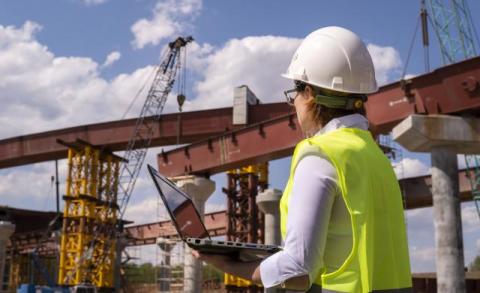The innovative technological advancements shaping critical infrastructure construction
August 16, 2021If you’ve ever lived in an area with road construction, it may seem like projects take an eternity and that nothing has changed in the way work has been done since Eisenhower formed the interstate highway system in 1956. The truth is road construction projects have adopted huge technological advancements that have led to faster and safer projects, with more innovations occurring every year.
As covered by Jennifer Goodman for ConstructionDive, the American Society of Civil Engineers (ASCE) designated 13 new projects as Infrastructure Gamechangers. These projects represent the latest innovations in infrastructure engineering.
Goodman highlights four of the advancements that are being used in transportation construction to build bridges, maintain roads, and create tunnels, among many other transportation-related projects. Three of these projects are outlined below.
Concrete Sensor System
The first project is a concrete sensor system being used by the Indiana Department of Transportation (DOT). The concrete sensor system tells workers how far along the concrete is in the maturation process.
“By leaving the sensors within the concrete for an extended period, engineers can study the effectiveness of their work over time, as opposed to the conventional testing period of just 28 days,” says Goodman.
The sensors track the concrete’s status over time, including communicating to the DOT when concrete needs to be replaced.
Unmanned Bridge Inspections
With more than 590,000 highway bridges, it’s easy to see why failing bridges is a huge concern for the nation’s infrastructure across every state.
In Michigan, a large number of bridges are over water leading to concerns of scouring, which occurs when fast moving water removes sediment from the bridge structure. These bridges need close monitoring, especially during high-water scenarios.
Trying to conduct this monitoring in those high-water events is a dangerous task. As a result, the state is turning to unmanned vehicles to help improve worker safety.
“The department is employing an autonomous boat-like device, called an unmanned surface vehicle (USV) to inspect bridge footings beyond what is usually possible during human dives,” says Goodman. “The 4-foot-long USV, named EMILY, uses cameras and sonar technology to investigate conditions around a bridge before determining if a crew member needs to get in the water.”
Recycled Road Pavement
Resource management is vital to the transportation industry not only from a cost perspective, but also from an environmental safety perspective. California’s TechniSoil Industrial uses both recycled plastic and reclaimed asphalt in their roadway product called Neo.
“Neo uses 150,000 plastic bottles per lane mile to create a 90% reduction in greenhouse gas emissions, a decrease of 84 truckloads per mile of hauling waste asphalt out and new asphalt in, and provides the opportunity for same-day returns to traffic,” says Goodman.
To do this, the existing road asphalt is milled and mixed with a polymer-infused substance, which is then immediately re-paved onto the road. The resulting roadway will last longer and be stronger than traditional materials, according to ASCE.
Check out Goodman’s full article on all four transportation projects on ConstructionDive or read about all thirteen Infrastructure Gamechangers.
Learn more about Capitol Tech’s degree programs in Construction, Facilities, and Safety and Security, Intelligence, and Critical Infrastructure. Many courses are available both on campus and online. For more information, contact admissions@captechu.edu.



